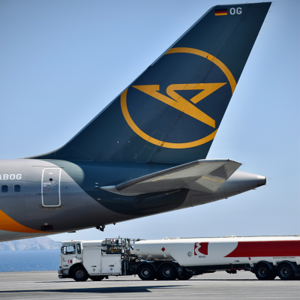

In the effort to cut down on global carbon dioxide emissions, in recent years, much of the emphasis has been on low or zero emission technology for personal transportation vehicles, such as battery-powered cars, trucks, SUVs, and also in the power generating industry, with the ramping up of renewable energy generation, ie. wind, solar, hydropower. The aviation and shipping industries, which account for around 8% of all the human produced carbon dioxide emissions, have until now had few alternatives to traditional fossil fuels. Recently, though, a team of scientists with ETH Zurich has successfully built a plant which is able to produce liquid fuels for these industries by extracting carbon dioxide from the air and using energy from the sun.
The mini solar refinery has been installed on the roof of the ETH Zurich Machine Laboratory and has been operating successfully under real world conditions for the past two years. First, carbon dioxide and water are extracted out of the air and then both are fed into a solar reactor. A satellite dish-shaped solar collector focuses and concentrates the incoming sunlight by a factor of 3,000, to power a multistage reaction which converts the water and carbon dioxide into syngas, within the reactor. This syngas can then be converted into many different liquid fuels, including: kerosene, gasoline, methanol, or other liquid fuels.
Most importantly, for reducing carbon dioxide emissions, this entire process produces fuel which is carbon neutral. This means when the fuel is used in an engine, the engine will produce an amount of carbon dioxide equal to the amount that was removed from the air to produce the same fuel.
Given the high solar resources needed in the production of this synthetic fuel, desert areas are the ones most suited to be developed as production regions. This would also avoid competition with livestock or agricultural land, as with biofuels. It is projected, that to meet the world’s energy demands within the aviation and shipping industries, less than one percent of desert land would need to be used.

